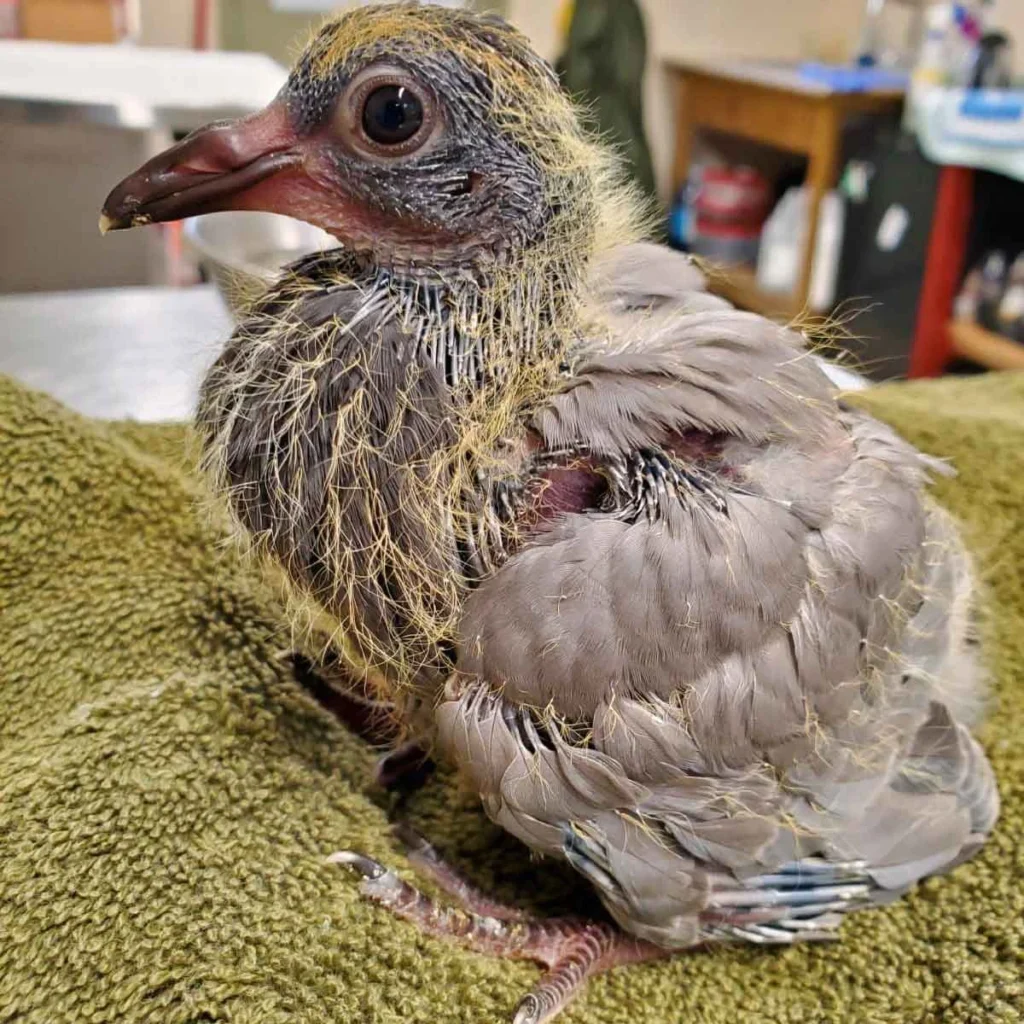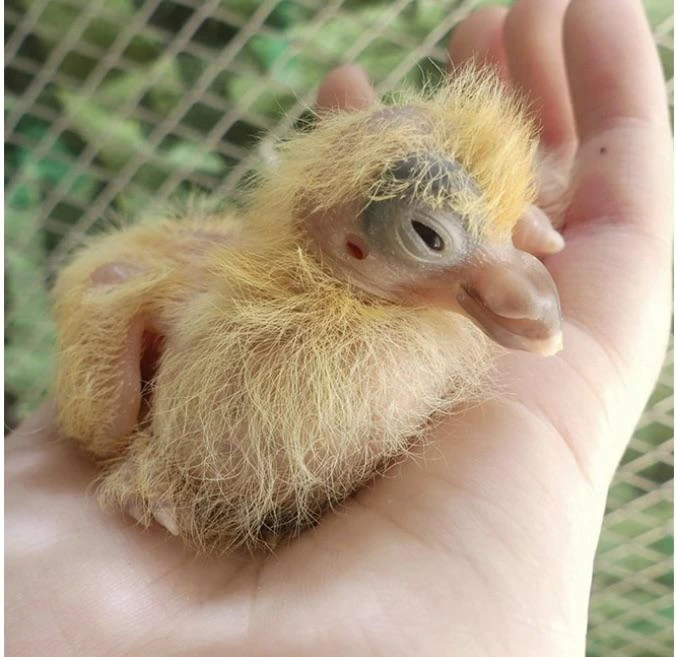Baby Pigeon: A Heartwarming Journey of Growth and Discovery
What is the meaning of a baby pigeon? Despite being frequently disregarded, these tiny fuzzy balls are fascinating! In contrast to their more mature counterparts, which are occasionally observed as simple gray birds, newborn pigeons, also known as squabs, are cute little bundles of soft feathers with large eyes. They are somewhat of a hidden gem in the bird kingdom because they spend their early years hidden away in comfortable nests, depending on their parents for warmth and nourishment.
Although adorable kittens or energetic puppies may come to mind when you think of newborn animals, baby pigeons have a certain appeal of their own. Their personalities begin to emerge as they get older, and you may even catch them stumbling around with an endearingly awkward elegance.Thus, keep in mind that the next time you spot a pigeon, there might be a cute baby pigeon nearby, just ready to make its first flight into the great wide world!
The Hidden World of Baby Pigeons
Understanding Baby Pigeons
Squabs, often known as baby pigeons, are the adorable juvenile members of the pigeon family. Unlike many other birds, they like to stay hidden during their early stages of life. Their nests are usually tucked away in high elevations, protected from potential predators, therefore this is mostly for their protection. Squabs are blind, featherless, and totally reliant on their parents to survive when they are born. They become dependent on one other for several weeks while they mature.
In the initial days of their lives, young pigeons are given a special food called “pigeon milk.” Produced by their parents, this nutrient-rich liquid is full of lipids and proteins that are vital to the squabs’ quick growth. As they become older, they start eating more seeds and grains, just like adult pigeons do. Their health and growth are greatly impacted by these early periods, therefore this careful caring is essential.
Squabs have a cute appearance when their fluffy down feathers develop as they grow. Not only do these feathers keep you warm, but they also indicate that they are becoming more independent. Seeing these tiny birds grow from defenseless hatchlings to self-assured juvenile pigeons eager to explore their environment is amazing.

Life in the Nest
A newborn pigeon’s nest life is an amazing sight. Usually constructed from twigs and other natural materials, pigeon nests are found in shady areas like ledges, eaves, or trees. The comfortable setup protects young pigeons from inclement weather and potential predators. Squabs grow up inside their siblings, where they are frequently huddled up next to one other to share warmth and security.
In the initial weeks of life, both parents actively participate in providing care for their offspring. While the mother feeds the squabs on a regular basis, the male assumes responsibility for watching over the nest. In addition to fortifying their relationship, the parents’ cooperation creates a loving atmosphere for the young pigeons. Early contacts with their parents are crucial because they impart important survival skills to squabs.
Baby pigeons behave playfully as they investigate their nest. In preparation for the day they will make their first flight, they practice their coordination and flap their tiny wings. During this critical developmental stage, squabs learn by imitating the actions and noises of their parents and progressively growing more self-reliant and self-assured.
The Transition to Independence
Baby pigeons go through a critical period in their development as they get older. They begin to leave the nest, usually after four to six weeks, and get more confident with each try. They still need to rely on their parents for food and direction, so this is an exciting and challenging time for them as they learn to navigate their new surroundings. Even though their initial flights are frequently awkward and full of flaps and tumbles, they get closer to independence with each try.
Squabs lose their soft down during this transitional period as their adult feathers start to grow in. This metamorphosis not only modifies their look but also improves their capacity for flight and feeding. It’s amazing to watch as their natural curiosity takes over as they begin to investigate their surroundings and learn about the world outside the security of their nest.
During this period, the bond between young pigeons and their parents is still very strong. Their parents feed them still, encouraging their curiosity but maintaining a close watch. The squabs will eventually grow completely independent and be prepared to join the ranks of the mature pigeons on which they previously depended. One amazing part of their development is this transition from vulnerability to independence.

Fascinating Behaviors
As they get older, baby pigeons display a variety of fascinating behaviors. Their social interactions with their siblings are among the most noteworthy. These juvenile birds practice social skills and coordination by playfully pecking and flapping all the time. They pick up crucial communication and hierarchy cues from these interactions that will help them as they make their way through daily life in the pigeon society.
Their feeding process is another fascinating activity. The squabs frequently make noise to indicate their hunger when a parent pigeon visits the nest. They exhibit a mixture of enthusiasm and impatience as they bob their heads and open their jaws. Their relationship with their parents is strengthened and their nutrition is guaranteed by this engagement. A look into the developing personalities of baby pigeons can be found in their cries and movements, which can be highly engaging.
Squabs start to mimic the motions and vocalizations of mature pigeons as they get bigger. Their social integration into the flock depends on their ability to mimic. They acquire their unique calls and learn to identify their own type, both of which are important for their future interactions. The intricate social structures and communication techniques present in pigeon colonies can be understood through observation of these activities.
Baby Pigeons in Urban Environments
Baby pigeons in urban environments have adapted surprisingly well to their environment. These hardy birds frequently decide to make their nests in bridges, buildings, and other man-made structures, benefiting from the resources and safety that are offered. Because of this, young pigeons are frequently spotted in busy cities, which attests to their flexibility and survival instincts.
Many have a variety of feelings when they see baby pigeons in metropolitan areas. While some find them cute and enjoy watching their activities, others can consider them to be a nuisance. Notwithstanding differing viewpoints, these birds support the ecosystem of the city by feeding hawks and controlling pest populations. It is common to undervalue their contribution to the urban wildlife population.
Living in the city exposes young pigeons to a wide range of experiences. Although the commotion can be exhausting, there are also chances to explore. In a fast-paced setting, young pigeons learn how to maneuver through congested streets, avoid oncoming traffic, and forage for food. They develop into well-rounded adults who can live happily in both urban and rural settings because of this experience.







